A Guide To Hospital Facilities Management
Table of Contents
- Introduction
- What Is Hospital Facilities Management?
- What Are The Benefits Of Facility Management In Hospitals?
- Which Services Fall Under Healthcare Facilities Management?
- Challenges In Proper Healthcare Facilities Management
- Tips For A Better Patient Experience Through Hospital Facility Management
- What Is The Role Of The Facility Manager In The Hospital?
- How Can Technology Assist In Proper Facility Management In Hospitals?
Key Takeaways
- Hospital facility management plays a critical role in the overall success of a healthcare facility by providing an environment of care that aids in treatment outcomes as well as patient satisfaction.
- Hospital facility management, when done right, can also help hospitals achieve efficiencies and better utilization of resources.
- Health facility managers ensure the smooth operation of the facility by taking care of services and utilities including security, operations, food and beverage, housekeeping, waste management, inventory, etc.
- Latest technology can assist facility managers in numerous ways in overcoming the challenges in proper facility management in hospitals.
Introduction
For the majority of people, when they think of healthcare, a picture of those working on the front lines of care in hospitals and clinics comes to mind. There is a comprehensive health facility management system in place to make sure that the doctors and nurses who are in direct contact with patients can deliver top-notch care. According to a report, the healthcare facility management is expected to reach $8.3 billion in the US alone by 2026.
In this article we will discuss healthcare facility management in detail, what are the responsibilities of a facility manager, why it holds so much value in a health facility, the role of technology in healthcare facility management, and much more.
What Is Hospital Facilities Management?
Hospital facility management covers a wide range of activities, such as maintenance of equipment, timely closure of non-clinical requests, repairs and maintenance within the facility, ensuring high levels of cleanliness and hygiene, and much more. This activity typically includes overseeing budgets, personnel, facilities, and safety. Additionally, health facilities managers may also be responsible for marketing and public relations, legal compliance, and security, as well as developing and implementing long-term planning strategies.
Everything comes together to create a functional healthcare setting that is welcoming for patients as well as for medical staff.
What Are The Benefits Of Facility Management In Hospitals?
Managing Accreditations And Regulatory Compliances
Being one of the highly regulated sectors, healthcare demands a no-compromise approach to accreditations and regulatory compliances.
Non-compliance with regulatory norms especially related to safety can draw huge penalties and even revocation of license.
A robust facilities management system can assist in keeping track of all the components that must be in working order for inspections.
Streamlined Routine Operations
A healthcare facility requires continued monitoring to ensure orderliness, be it clean rooms and premises, vigilant security, proper working equipment, and everything else in between.
Additionally, there are numerous moving parts that undergo continuous updates.
With a proper facilities management backbone, all moving parts can be tracked from one place with streamlined communications and updates.
Optimal Care Environment
To provide a safe and efficient environment to patients, staff, and visitors routine inspections are one of the hospital facility management’s key activities that are performed to find and address any problem areas inside and outside of healthcare facilities., such as:
- Fire safety
- Emergency power supply
- Water and waste management
- Air quality management
Security
Another critical benefit that can be derived from sound healthcare facility management is around security.
This study reinforces the need for heightened cyber security in healthcare as the cases of digital breaches and attacks have intensified in the past few years amidst hospitals becoming increasingly tech dependent.
Effective facility management in healthcare also offers real-time security and surveillance to keep the entire facility safe and secure.
Improved Patient Experience for Inpatients and Outpatients
The first experience a patient has with hospital services and healthcare facilities is crucial in fostering brand loyalty. The patient’s experience will be based on factors like cleanliness, waiting times, staff friendliness, customer services, the availability of user-friendly furniture, and the accessibility of medical facilities.
The entire premise of healthcare facility management revolves around providing a safe and welcoming environment to its patients and staff.
Which Services Fall Under Healthcare Facilities Management?
Facility management services in a hospital can be classified broadly into two types:
Hard Facility Management Services
Hard FM services relate to the physical structure of the building like:
- Gas, plumbing, and heating
- HVAC systems
- Lighting, electrical, and mechanical
- Fire safety systems
- Building maintenance work
Soft Facility Management Services
Soft FM services ensure that the occupants of a building are happier, more comfortable, and safer. Soft FM services include:
- Grounds maintenance
- Landscaping
- Decorating
- F&B services
- Cleaning services
- Pest control
- Waste management
Challenges In Proper Healthcare Facilities Management
Controlling Operational Costs
Healthcare facility managers are under increased pressure to reduce costs wherever they can to maintain profitability as healthcare costs continue to rise.
According to an HBR study, it’s imperative to carefully investigate ways to cut costs to stay afloat.
Implementing lean principles of continuous improvement in healthcare can help reduce waste in every process and gain several benefits including:
- Better workflow management and less staff waiting/idle time.
- Improved efficiency practices that lead to higher productivity.
- Better tracking of operating expenses.
As per this study, effective space management can result in cost savings of up to 30%, and savings of up to 30-50% can be realized by smart buildings with integrated systems.
Getting Qualified And Humane Manpower
It is particularly difficult to find qualified personnel in the facility management department, especially for housekeeping needs. The housekeeping staff is the one who constantly interacts with the patients. Hence it is extremely important for the personnel to not only be technically proficient but also possess empathy towards patients.
Compliance Management
One of the key challenges facing hospital facility managers is staying up to date with the constant changes in healthcare regulations and acts and complying with the same.
Tracking Manpower And Physical Assets
Assets, including physical and human resources, are typically mobile in a healthcare facility and not fixed in one location, making it difficult and challenging to track their movement in real time and that too from a single location. Moreover, regarding manpower, HFM managers are responsible for tracking who is working on what and the expected TAT, any delays and causes, etc.
It is time-consuming and can reduce productivity when an asset needs to be tracked down manually. In fact, nurses are found spending 6,000 hours per month searching for equipment.
Patient Satisfaction
According to this study, patient’s perceptions of the facility as a whole, including feelings about cleanliness, maintenance, and even modern features, are reflected in patient satisfaction scores.
Facility managers are crucial in assisting healthcare facilities to raise patient satisfaction scores in these categories.
Tips For A Better Patient Experience Through Hospital Facility Management.
According to research on factors influencing patient satisfaction, the most influential factor is the “medical staff’s service attitude.” This was followed by medical staff services technology and hospital convenience. In this context, hospital facility management plays a crucial role in influencing patient satisfaction.
Here are four hospital facility management tips many hospitals can benefit from:
Implement a Bed-Tracking System
A high level of coordination and communication is required for efficient patient throughput. Reducing room turnaround times results in increased revenues as well as improved patient satisfaction for hospitals.
A patient who is waiting needs to spend less time in the emergency room if room readiness times are fast. Hospitals can use process-mapping techniques as well as heuristic approaches integrated into an existing bed-tracking system.
Through this technique, hospitals can gather actionable, real-time data to help inform and execute operational decisions. This also allows system managers to spot bottlenecks, hold individual units and employees accountable for any issues, and track the health system’s overall performance.
Attach RFID Tags to Beds and High-Value Equipment
Hospital beds and portable testing machines are high-value items in hospitals that can occasionally go missing or get misplaced. Keeping track of these items is critical in hospitals because the replacement cost is very high. Using an RFID system is ideal for keeping track of these assets within the building.
Because of the expensive and critical nature of these assets, if an RFID system is deployed, hospitals typically can use an active RFID Real-Time Location System (RTLS) to know where they are at all times.
Some hospitals implement the system to read only certain areas or rooms, while others set up their systems to cover entire hallways or floors. RFID tags also help recall defective equipment faster, thus helping provide a better patient experience.
Use Data to Predict Demand and Usage Patterns
It is usually assumed that emergency admissions are random. However, hospitals that have deployed software to collect and analyze data would attest that though even emergencies are random, they can identify some trends. These can help them with predictability, manage staff resource allocation and have materials/ medicines stocked accordingly.
Besides this, predicting staffing and resource levels on a particular day will help save the hospital money by reducing wastage. It can also help decrease patient wait time by assigning the correct number of providers to the predicted volume, thus improving the patient experience.
Better Utilize Nurses’ Capabilities
Nurses typically have to coordinate with various ancillary services like cleaning, electrical, insurance, laboratory, pharmacy, etc. A system to buzz, allocate the work to relevant administrators, and setting reminders would help nurses focus a lot better on patient care.
An example of improved patient care with a lesser workload of nurses would be clubbing the team of professionals, including doctors and nurses. So, nurses who specialize in Nephrology or Oncology would work only in those specific IP units.
This helps nurses provide critical feedback to the doctors on how the patient’s signs and symptoms are showing, making the care a lot more specialized.
Another way to use nurses’ extra time would be to reduce the workload of doctors. For example, nurses can perform certain tests proactively (based on set protocols) before a doctor’s visit. This would make the doctor’s visit more efficient and help them provide better advice during the rounds.
What Is The Role Of The Facility Manager In The Hospital?
Overseeing Day-to-day Operations
- Determining the need for upgrades or maintenance
- Establishing maintenance and safety guidelines
- Monitoring the inventory
- Examining how well-kept and organized are patient rooms, waiting areas, operation rooms, etc. are.
- Acquisition and installation of furniture and equipment
- Structural inspection of buildings to identify any existing or potential issues
- Negotiating service agreements with third-party suppliers and service provider
Regulatory Compliance
According to this research, compliance is a top priority for two-thirds of professionals. In a healthcare setup, due to the inherent risks to the health of patients and employees, compliance with local laws and regulations is one of the most important duties of any healthcare facilities manager.
Maintaining Security
For facility managers, this may entail overseeing:
- Access – Who enters and exits a healthcare facility.
- Digital Security – Preserving the integrity and privacy of data, including that pertaining to patients and electronic medical records
- Equipment Safety – Many healthcare equipment’s may need proper safety norms in place for handling and use.
Preventive Maintenance
The HFM team can handle routine maintenance through preventive maintenance regime thereby eliminating issues before they arise, thus reducing the number of requests they receive, extending the lifespan of their assets, and ensuring that equipment is operating at its best.
Assets Tracking
According to this Forbes advisory report, tracking of assets in a healthcare facility reaps multiple benefits like:
- Staff can quickly and easily locate medical equipment in real-time
- The cost of replacing lost or stolen equipment is minimized
- Determining the true value of an asset by tracking its ROI is possible
- Ensure that asset consumption and performance statistics are accurate
- Better inventory accuracy and control
- Optimum use of physical space and storage of equipment in an organized manner
The HFM manager is expected to locate any given asset in real-time from a single point of access.
Managing Finances
Managers of healthcare facilities must create and adhere to an operating budget. According to a study, the average capital project is 80% over budget and 20 months behind schedule but adhering to a sound financial strategy can lead to up to a 45% reduction in overall project costs.
In addition to deciding on new investments, spending priorities, and service agreements, they must also figure out how to create the budget based on their understanding of the facility’s financial situation.
How Can Technology Assist In Proper Facility Management In Hospitals?
IoT-Enabled Asset Tracking
This study emphasizes how real-time location systems are benefiting healthcare facilities.
Asset tracking tools that are IoT-enabled come in different avatars, including:
- QR codes
- Bluetooth tags
- GPS trackers
- RFID chips
Better Feedback Collection
The life of an HFM manager is made easier by having a suitable digital feedback collection tool where patients can send their feedback about the hospital ambiance and environment directly to the top management and nothing can be kept secret.
Managing Human Resources
Biometric attendance systems, digital tracking of manpower movement, service request assignment and tracking, and comprehensive ERP systems are some of the technological tools HFM managers can deploy for managing human capital.
Analytics And Big Data For Healthcare
Hospitals that have implemented analytics to gather and analyze data would attest that even though emergencies are unpredictable, they can still spot some trends. These can aid in predictability, staff resource management, and having materials and medications stocked appropriately.
Additionally, foreseeing staffing and resource needs will save the hospital money by minimizing waste. By allocating the right number of providers to the anticipated volume, it can also help reduce patient wait times while enhancing the patient experience.
Code Compliance
Healthcare facilities can stay compliant by maintaining up-to-date, accurate documentation using digital tools. This study highlights how healthcare facility managers can leverage technology to make compliance easier and more efficient.
Conclusion
Heath facility managers play a crucial role in building the image of a hospital in the public eyes. With lots of challenges along the way, the task is also rewarding in the sense that an HFM manager tries to ease the patient journey. With the aid of technological solutions, facility managers in hospitals can not only tighten their workflow but also elevate the patient experience.
Here’s another useful resource on hospital facility management. Check out the interview of an experienced hospital facility manager to understand more about the role, the challenges, and the outlook for the future.
5Mins Read
Author | Pooja George & Sayan Nan







